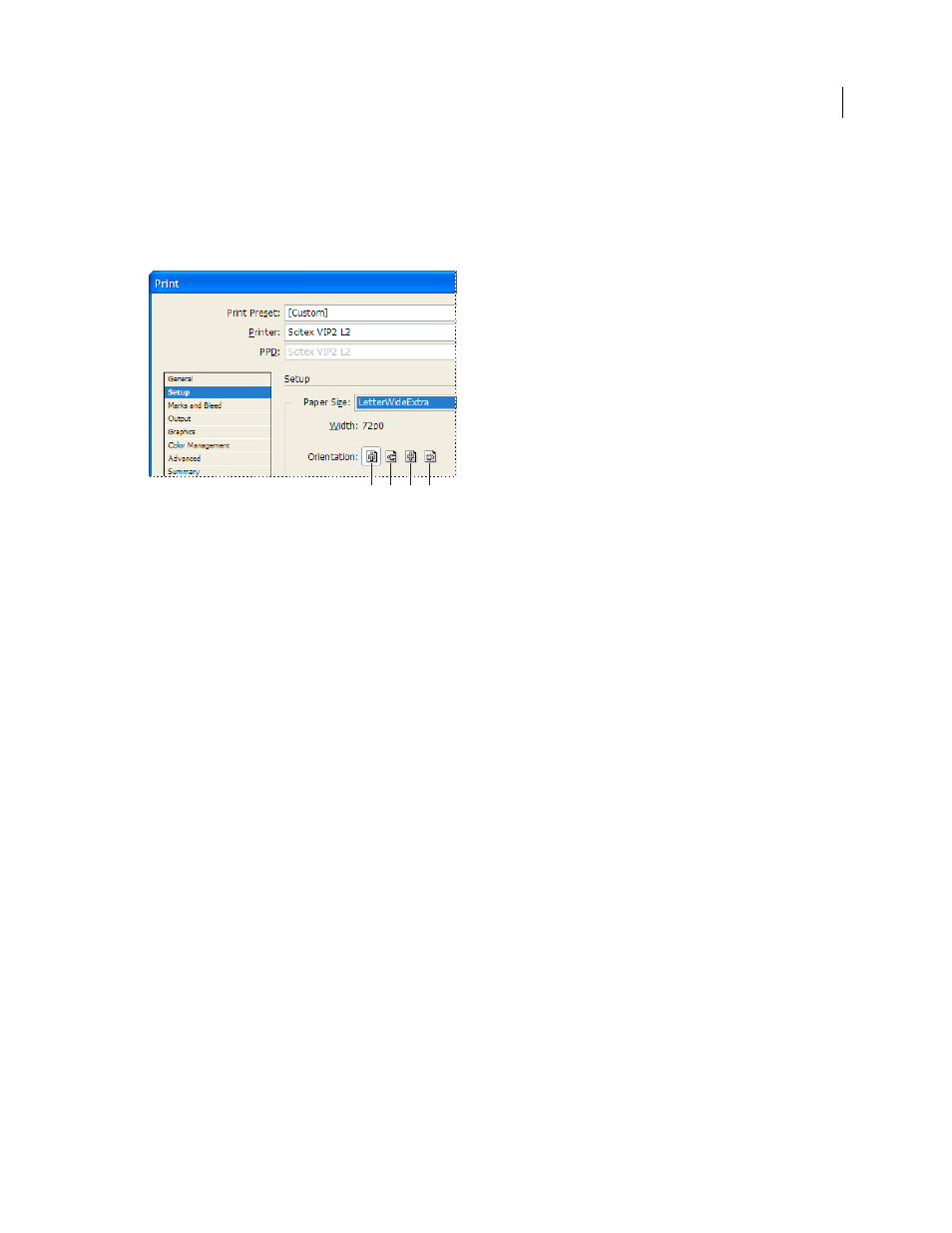Specify a custom paper size – Adobe InDesign CS5 User Manual
Page 608

602
USING INDESIGN
Printing
Last updated 11/16/2011
In most cases, the page orientation specified in Document Setup (File
> Document Setup) and the output orientation
specified in the Setup area of the Print dialog box should be the same (both portrait or both landscape), whether you
print normal or transverse. If you’re printing spreads, you may want to choose a different paper size and orientation
(such as landscape) to fit all pages of a spread on a single sheet. If you’ve rotated the spread view, you may want to
change the orientation to print the spread properly.
Orientation buttons
A. Portrait B. Landscape C. Reverse Portrait D. Reverse Landscape
Specify a custom paper size
If you’re using a printer that accommodates various paper sizes, such as a high-resolution imagesetter, you can specify
a custom paper size when you print. InDesign makes the custom option available only if the selected PPD supports
custom paper sizes.
The largest custom paper size you can specify depends on the maximum imageable area of your imagesetter. For more
information, consult the documentation for your specific printer.
Note: Custom paper size options for non-PostScript printers is not accessible from the InDesign Print dialog box. To set
those printer-specific features, click Setup (Windows), Printer (Mac OS), or Page Setup (Mac OS) in the InDesign Print
dialog box. Check the documentation for your non-PostScript printer driver for details.
1 Choose File
> Print.
2 If you are printing a PostScript file, choose PostScript for Printer in the General area of the Print dialog box. Then
select the PPD that supports custom paper sizes.
3 In the Setup area of the Print dialog box, choose Custom in the Paper Size menu.
Note: If Custom is not available, the PPD you selected when you set up your printer does not support custom paper sizes.
4 To specify width and height, do one of the following:
•
To let InDesign determine the smallest paper size needed for your document’s contents, bleed and/or slug areas,
and any printer’s marks, select Auto for Width and Height. Auto, the default option, is also useful if you have
different sized pages in a book and you’re printing on continuous media, such as a roll of film or photosensitive
paper.
•
To specify a paper size larger than the default, enter new dimensions in the Width and Height text boxes. Be sure
to increase the values; decreasing the default values may clip your document.
5 To change the placement of the page on the film, enter a value for Offset.
The Offset value specifies the amount of space along the left side of the imageable area. For example, entering a value
of 30 points in the Offset option shifts your page 30 points to the right.
A
B
C
D
